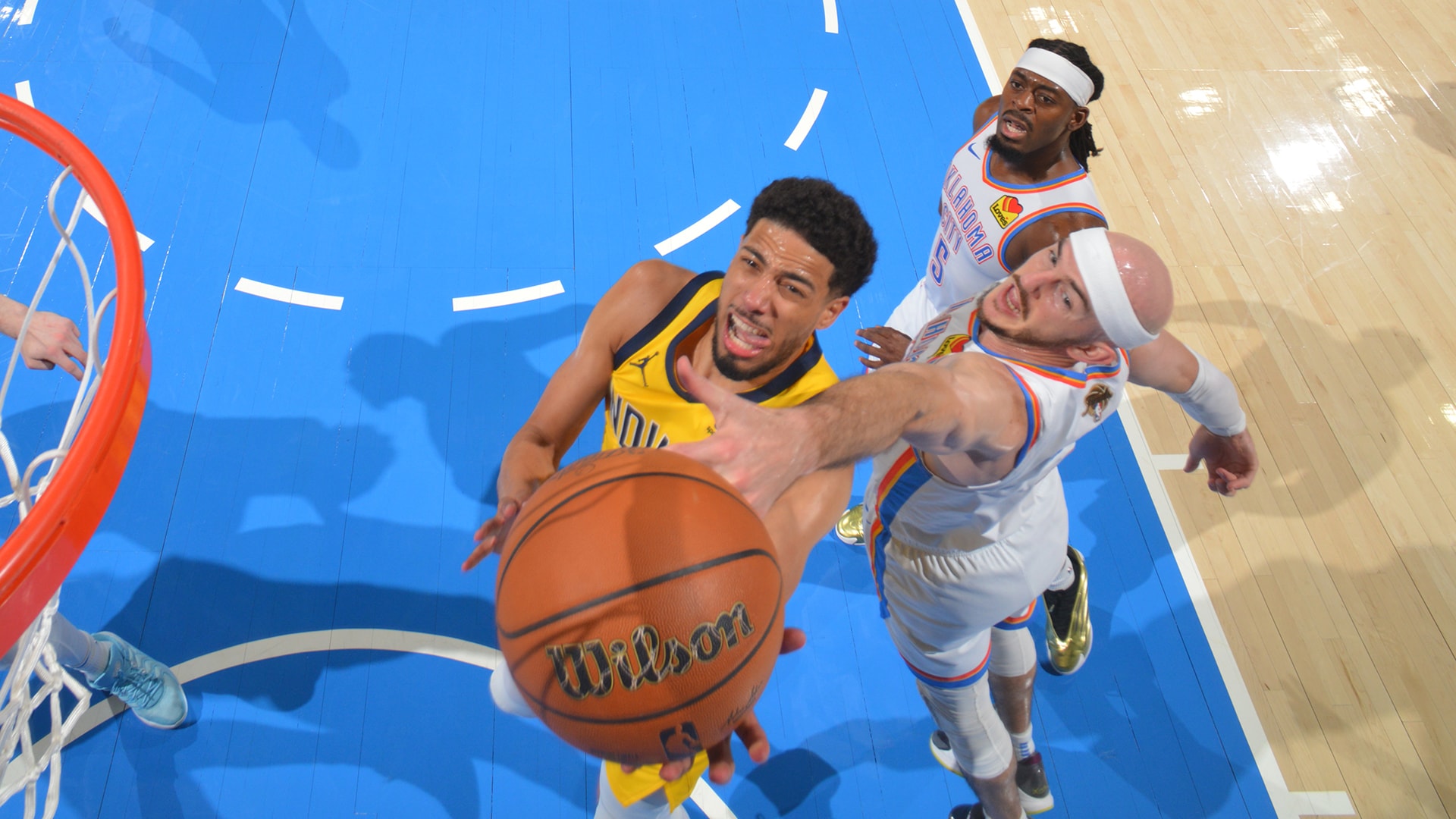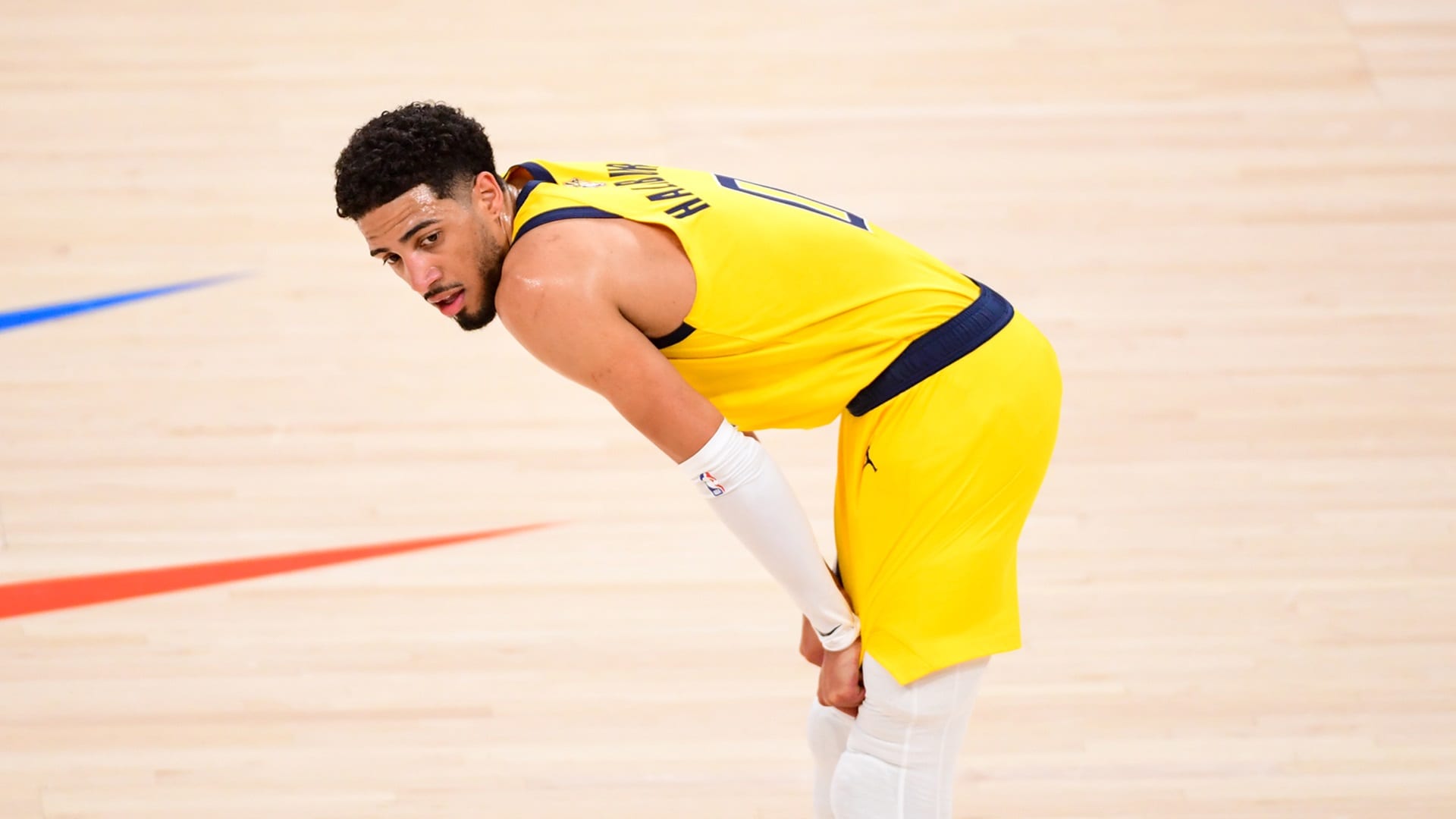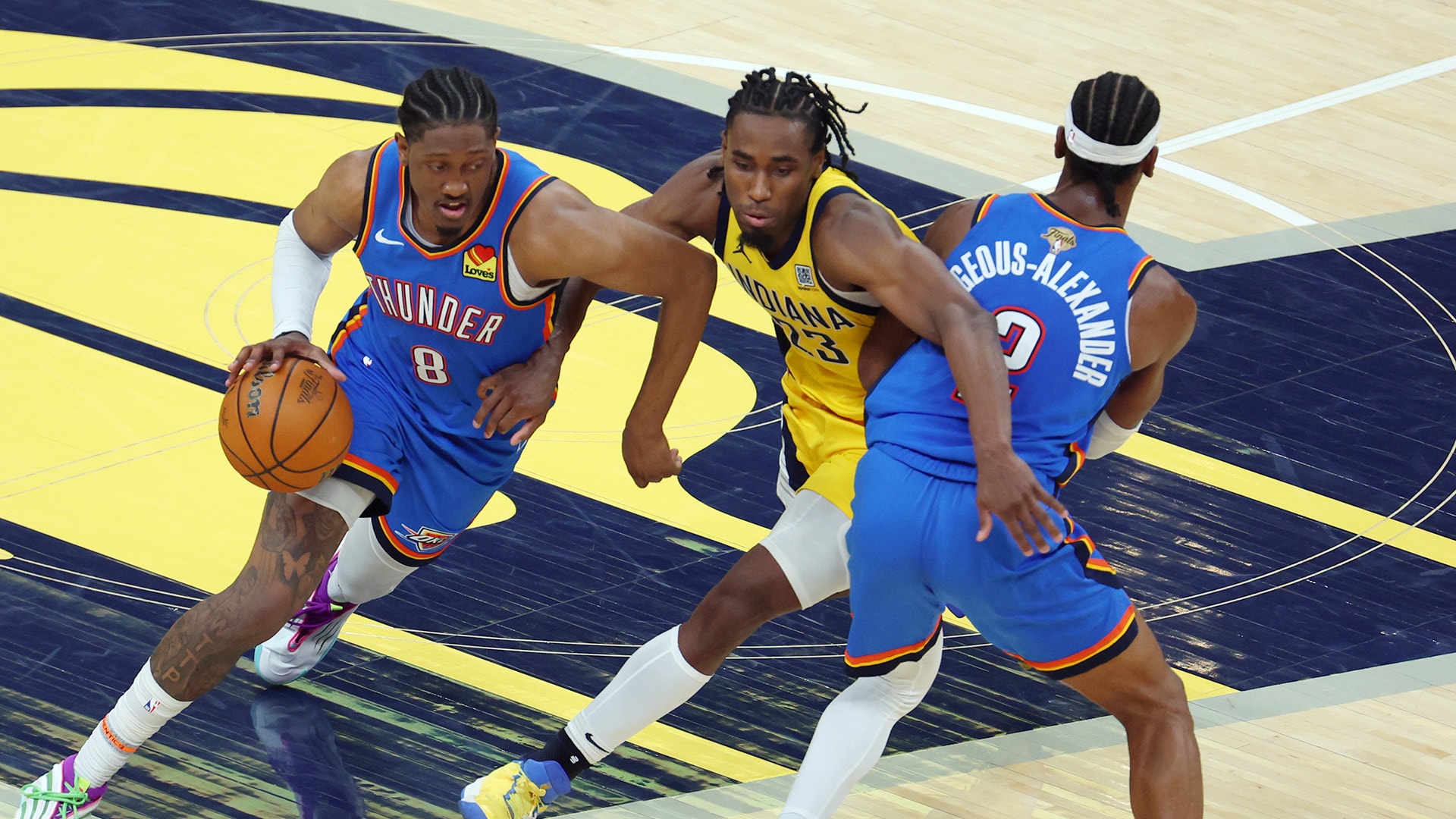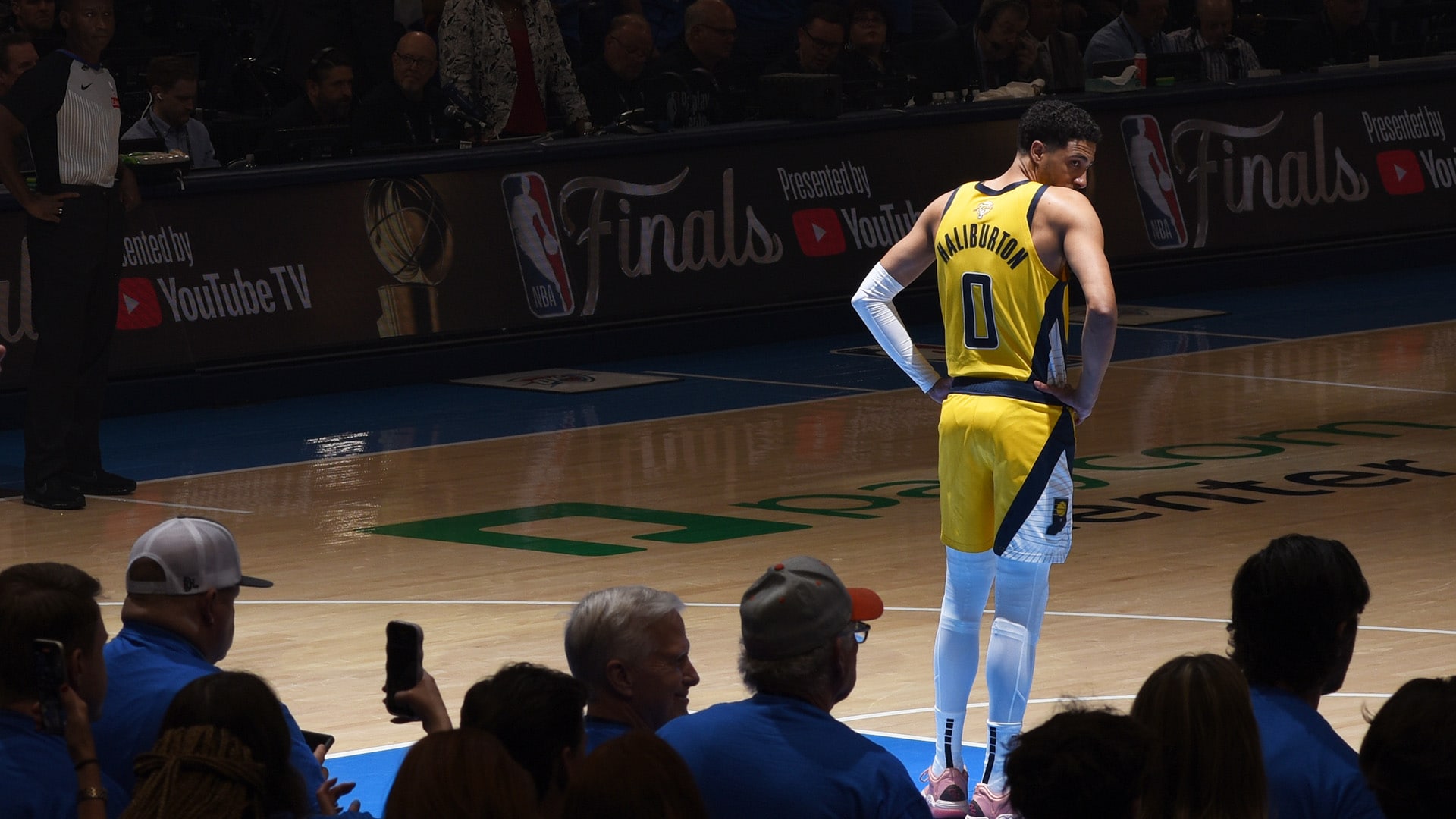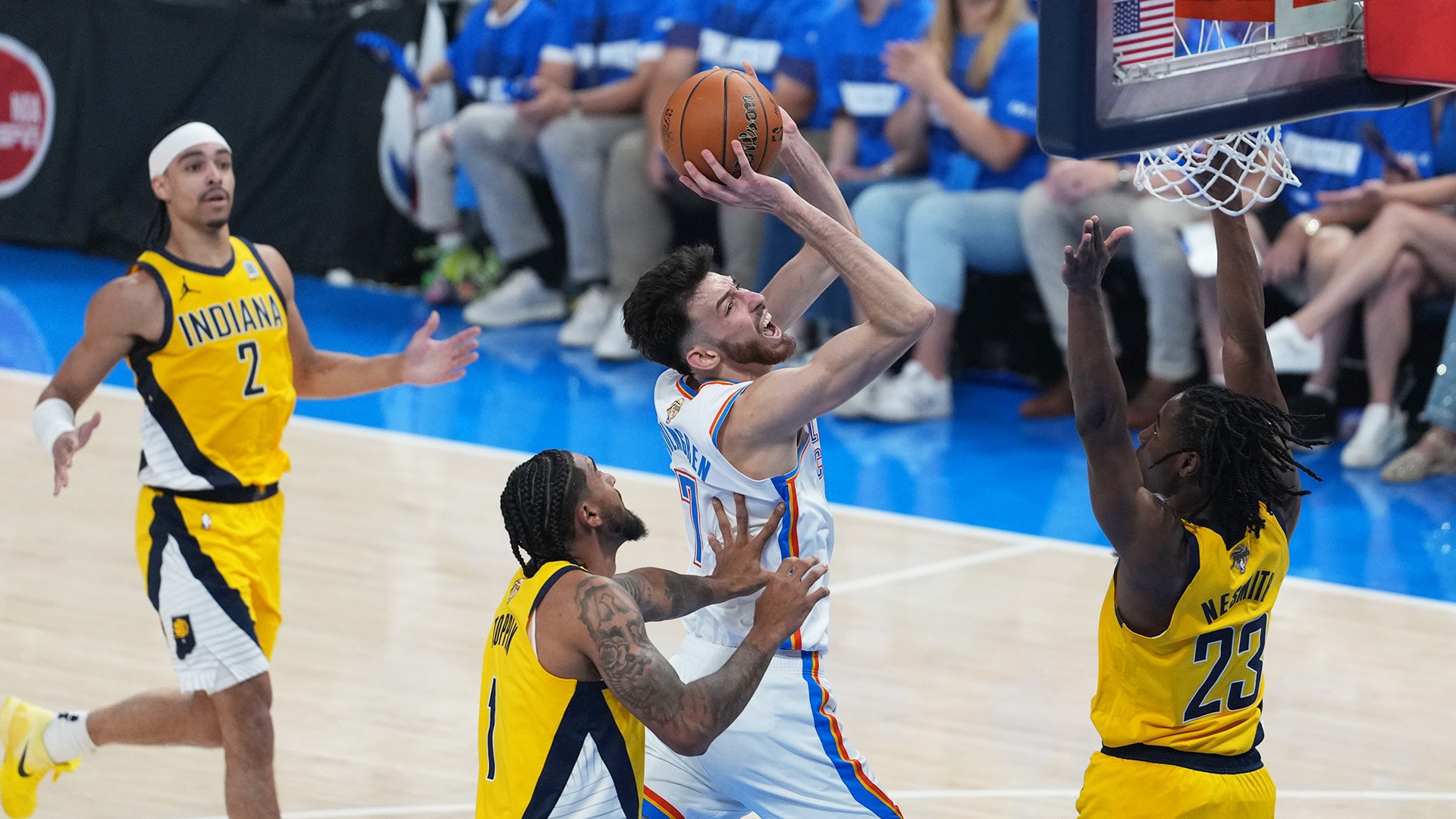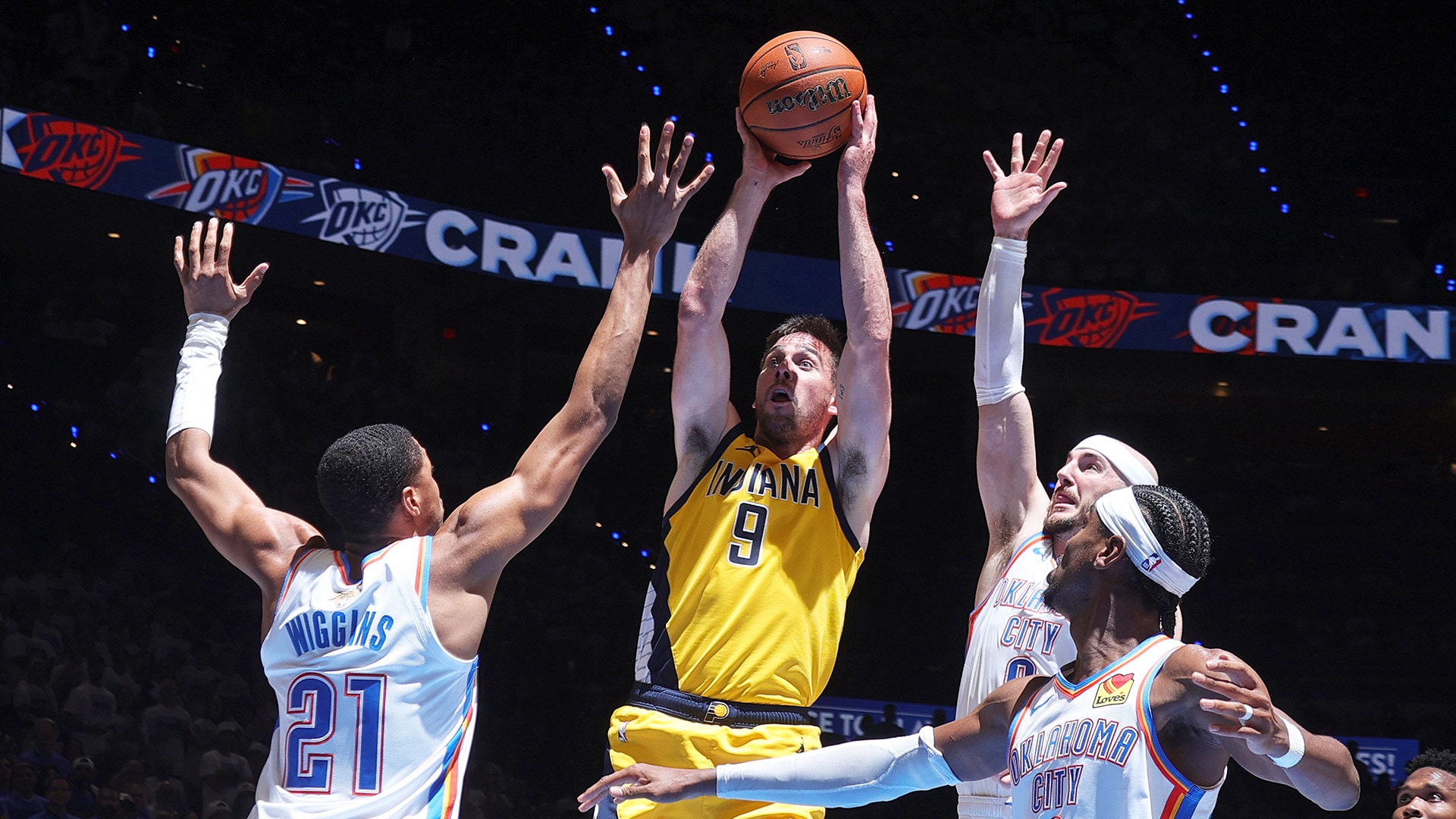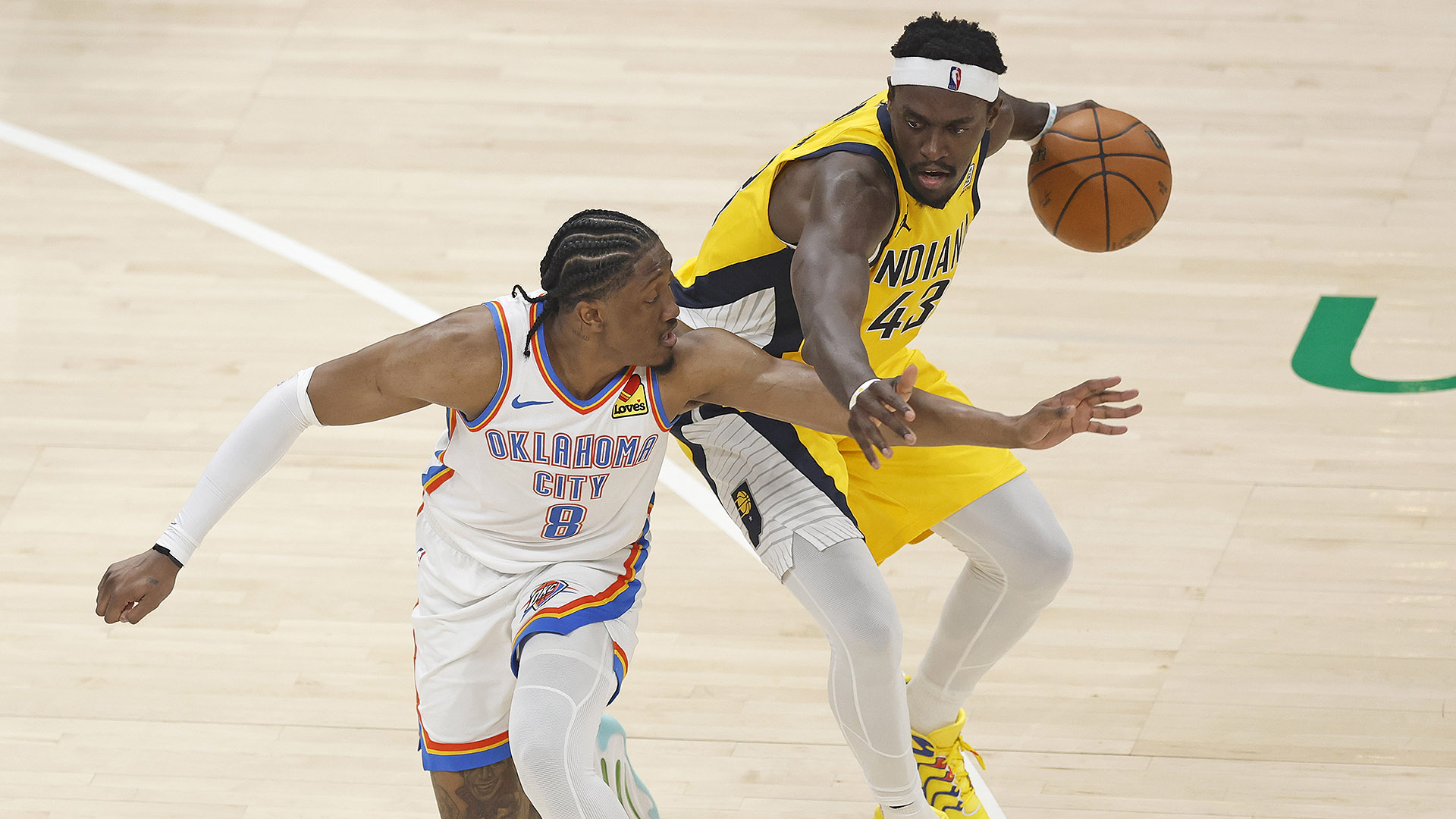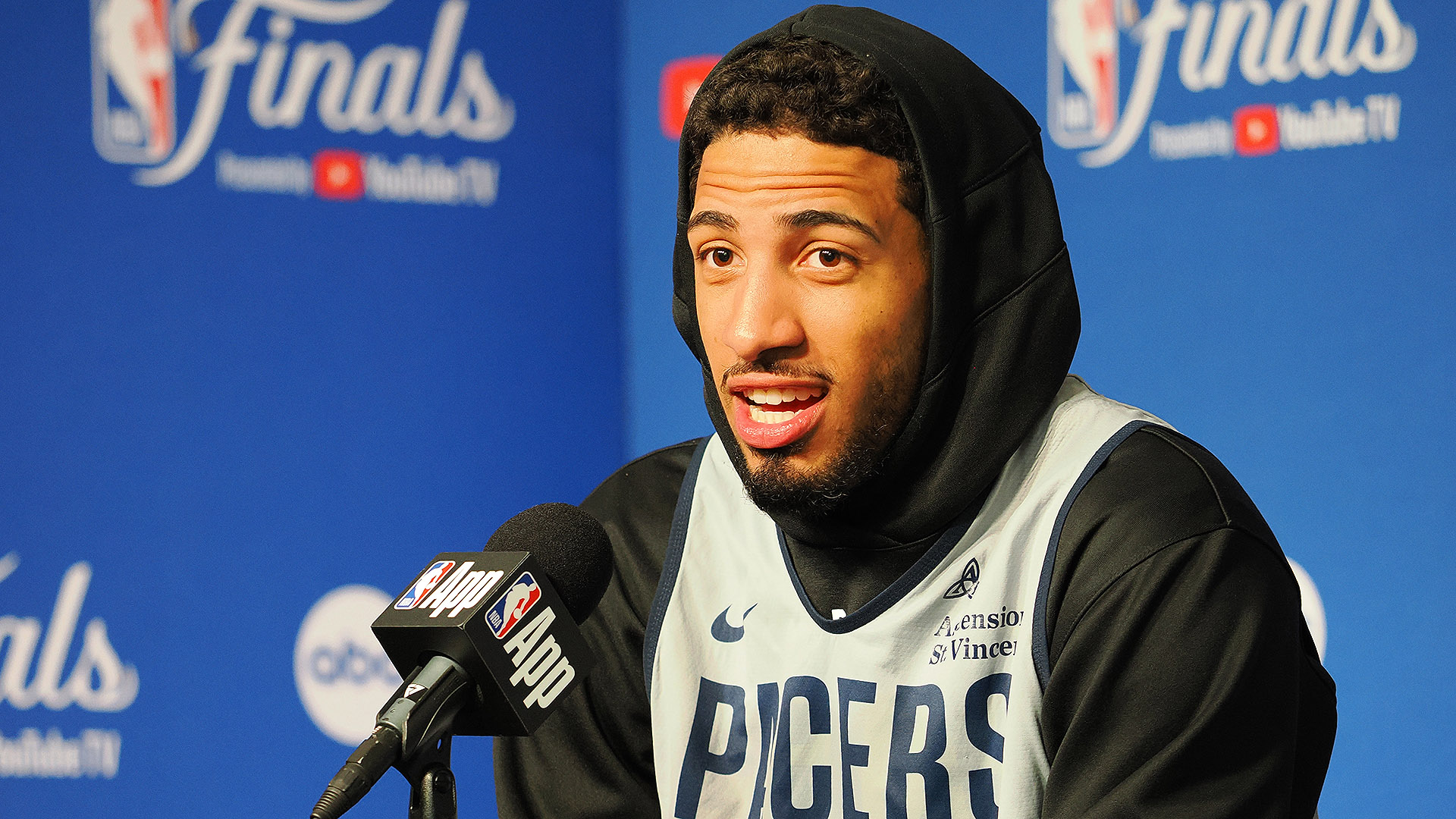SGA & Jalen Williams join LeBron James & Kyrie Irving as only teammates to deliver a 40- & 30-point game in the Finals since 1980.
OKLAHOMA CITY — It took five games, but we finally got some transition offense in the NBA Finals.
Through the first three rounds of the playoffs, the Indiana Pacers (25.8) and Oklahoma City Thunder (25.3) ranked first and second in transition points per game, per Synergy tracking. But through the first four games of the Finals, neither team had been able to run nearly as much as they had in getting here.
Both teams have also been terrific regarding transition defense, and they combined to average just 31 transition points over those first four games. The Thunder couldn’t turn steals into easy fast breaks, and the Pacers found out that running is much more difficult when you’re not playing the New York Knicks.
Then, in Game 5 on Monday, the Thunder finally broke through, registering 28 transition points as they took a 3-2 series lead with a 120-109 victory.
Here are some notes, numbers and film on how Oklahoma City got running …
1. Defense leads to offense
The Thunder’s transition offense starts with a defense that has averaged 10.8 steals per 100 possessions, the most for any playoff team that played beyond the first round in the last 26 years. Their 15 steals on Monday were one shy of their high for these playoffs.
While the guards do most of the damage, 11 of the 12 Thunder players who’ve played at least 50 playoff minutes have averaged at least one steal per 36.
The one exception is Chet Holmgren, who got credit for a steal early in the first quarter when Isaiah Hartenstein stayed in front of a Pascal Siakam drive and knocked the ball out of his hands as he picked up his dribble …
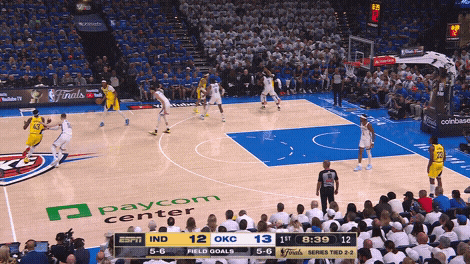
The Thunder didn’t score immediately off that live-ball turnover, but the Pacers’ defense still wasn’t set when Hartenstein trailed the play and caught Shai Gilgeous-Alexander’s pass in the paint. With Siakam still making his way into the frontcourt, Tyrese Haliburton was guarding two guys on the right side of the floor, and one of them — Jalen Williams — cut to the rim for a dunk …
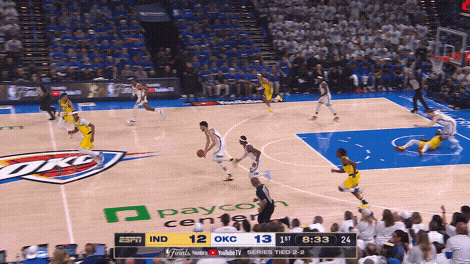
Midway through the second quarter, the Pacers seemingly had a great transition opportunity of their own when Haliburton found Ben Sheppard under the basket. But Hartenstein sold out to scare Sheppard away from a layup, and then Alex Caruso anticipated Sheppard’s next move, intercepting his pass to a cutting Haliburton.
The result was a three-point play for Williams in transition …

Williams finished with a game-high 40 points on Monday, with 14 of the 40 coming in transition. That was more transition points than he had in Games 1-4 combined (12) and just one shy of his season high (15 vs. New Orleans on Nov. 13), according to Synergy.
2. Beating the press with high screens
A few of those transition points didn’t come through the Thunder’s aggressive defense but rather through the Pacers’ aggressive defense.
Indiana has been picking up the Thunder’s ball-handlers as soon as they get the ball in the backcourt. This can take time off the shot clock and, ultimately, wear Oklahoma City down. However, it can also allow Gilgeous-Alexander and Williams to get downhill when their teammates hit their defenders with screens more than 30 feet from the basket.
That happened twice in the second half of Game 5. After an Indiana bucket midway through the third quarter, Hartenstein hit T.J. McConnell with a screen in the backcourt, Williams drove by Tony Bradley (defending well beyond the 3-point line) and drew a foul on Haliburton.
Early in the fourth quarter, Bennedict Mathurin could never get back in front of Williams after another Hartenstein screen in the backcourt, and Siakam picked up a foul on Williams’ drive …
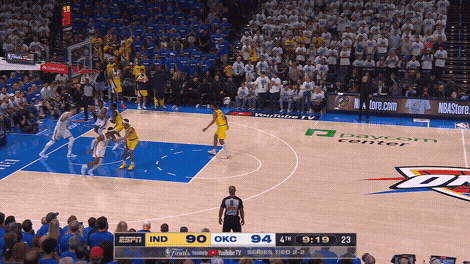
According to Second Spectrum tracking, the Thunder’s 69 ball screens in Game 5 were set at an average of 30.5 feet from the basket, their highest average of the season. Their four highest averages in their 103 total games are Game 5, Game 3, Game 4 and Game 2 of the Finals.
3. Mistakes stall Pacers’ comeback
Despite another ugly first half (their third first half in the series in which they scored less than a point per possession), the Pacers were within two points with a little more than eight minutes left. But they then committed five live-ball turnovers on their next seven possessions, leading to an 18-4 Thunder run that put the game away.
The biggest play of the game may have been a miscommunication between Haliburton and Nembhard, but it was forced by Cason Wallace.
Nembhard was a little hesitant to shoot all night, and he passed up an opportunity to pull up from 3-point range when Gilgeous-Alexander went under a Bradley screen. After picking up his dribble, he wanted to get the ball to Haliburton. But Wallace was denying the Pacers’ point guard 30 feet from the basket.
Haliburton cut back door, but Nembhard passed to where he was. Wallace picked up the loose ball and got an easy dunk to put the Thunder up seven …
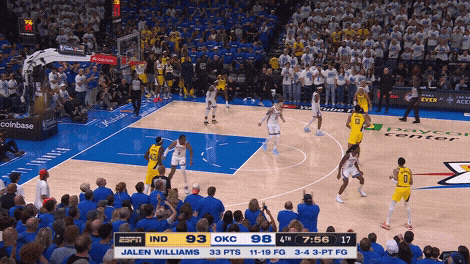
A few possessions later, Lu Dort closed out to Nembhard, and Williams helped on his drive into the paint. Instead of coming to a stop so he could make a better decision with the ball, Nembhard tried to throw a jump pass across his body. Gilgeous-Alexander picked it off and got a three-point play on the break …

According to Synergy, the Pacers, despite their 23 turnovers, were slightly more efficient than the Thunder in the half-court on Monday. But the transition game, which had been quiet for both teams for most of the series, was the difference.
And it has Oklahoma City one win away from its first NBA championship. Game 6 is Thursday (8:30 p.m. ET, ABC).
* * *
John Schuhmann is a senior stats analyst for NBA.com. You can e-mail him here, find his archive here and follow him on X.
The views on this page do not necessarily reflect the views of the NBA, its clubs or Warner Bros. Discovery.


